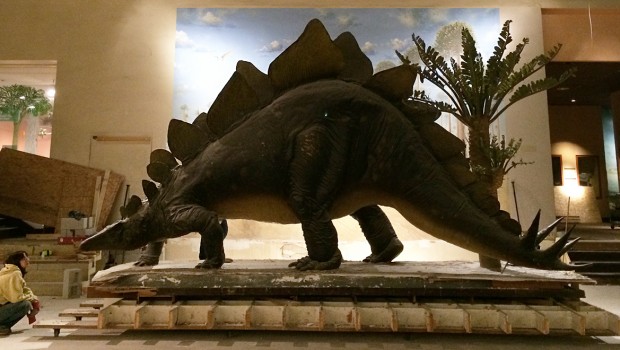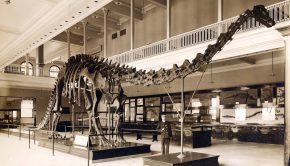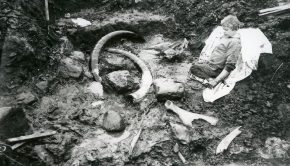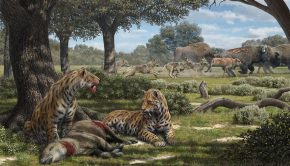Episode 56: Vertebrate preparators
Preparators are specialist staff working in museums and universities worldwide. They perform a very wide variety of tasks from fieldwork excavations, to specimen conservation. Any fossil has to be prepared for use, whether its to expose specific parts so that they can be studied, or to preserve and reconstruct a specimen so that it can be displayed in a museum gallery. Vertebrate preparation is an increasingly professionalised field that plays a huge part in the process of modern palaeontology.
In this episode we speak to Michelle Pinsdorf, a museum specialist at the Smithsonian National Museum of Natural History about how she became a preparator, what the job involves, how fossils get from the field to display, and about preparators’ roles in the overhaul of the NMNH deep-time exhibit.
For more information on preparation at the Smithsonian go here.
Podcast: Download (Duration: 49:35 — 68.1MB)
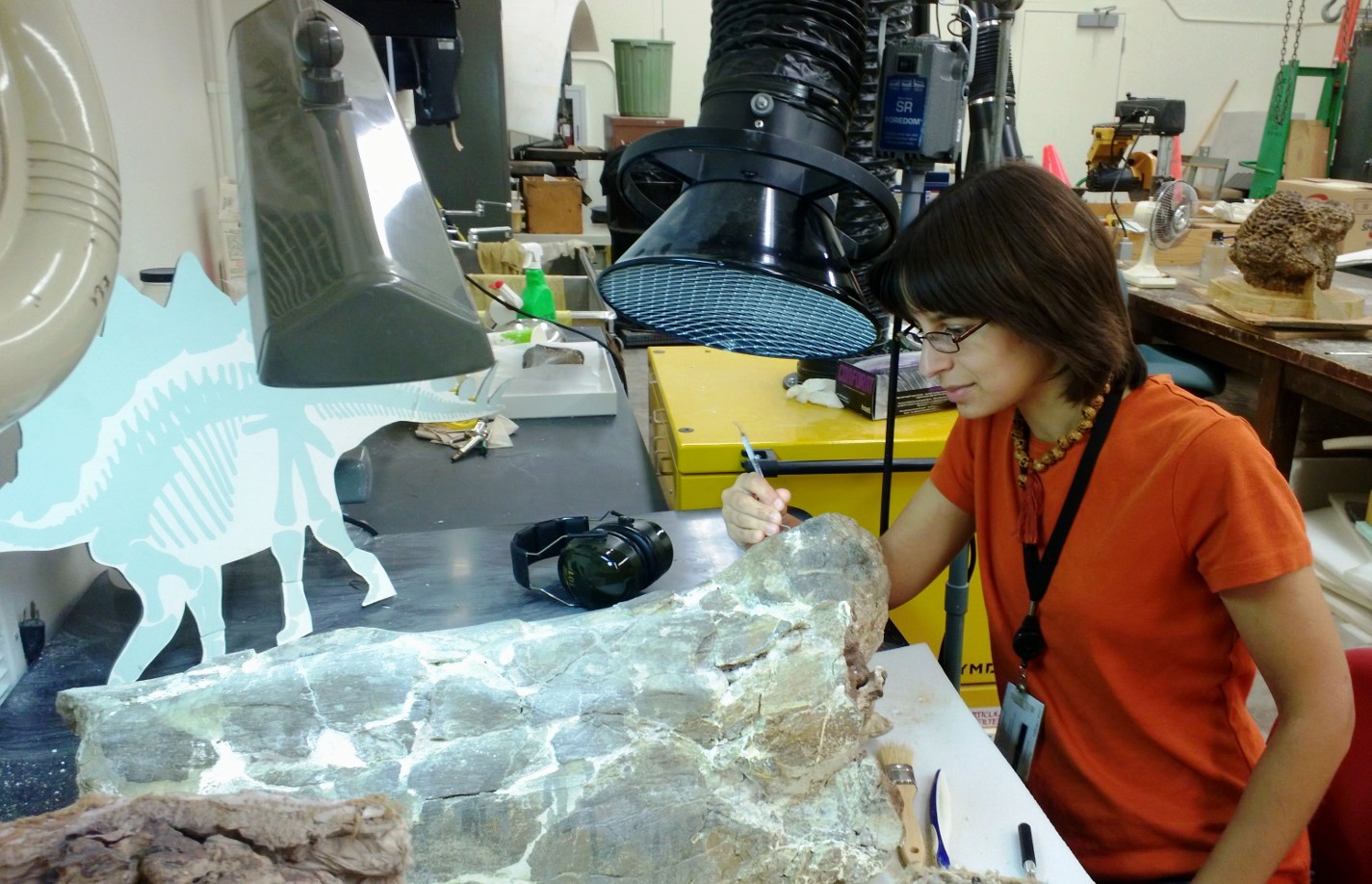
Michelle Pinsdorf cleaning the proximal end of a Triceratops femur, in the National Museum of Natural History’s Vertebrate Preparation Laboratory.
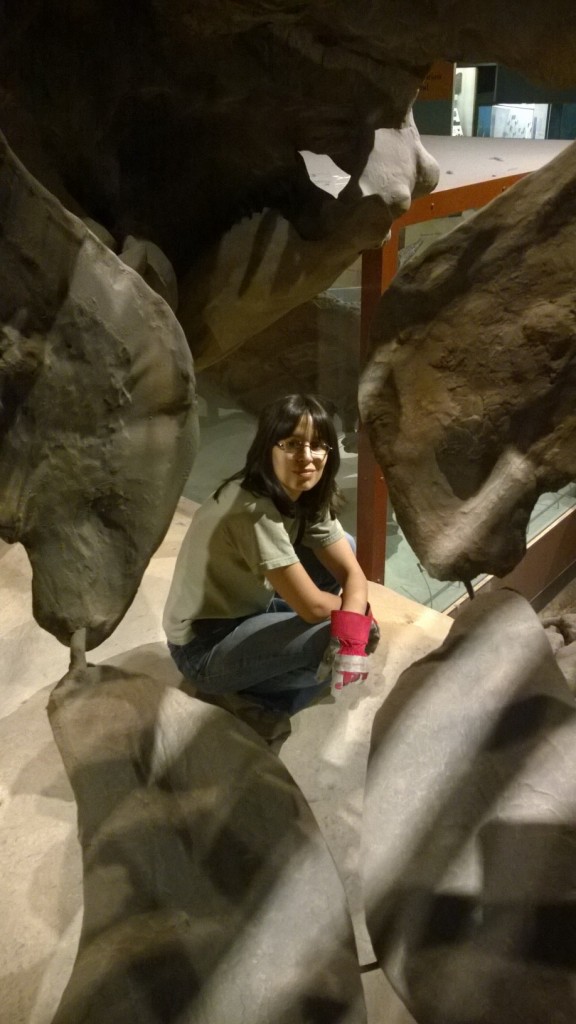
Michelle working to deinstall fossils (here, a cast Triceratops skeleton) from the Smithsonian’s previous Fossil Halls display. Photo credit: Matthew Miller.
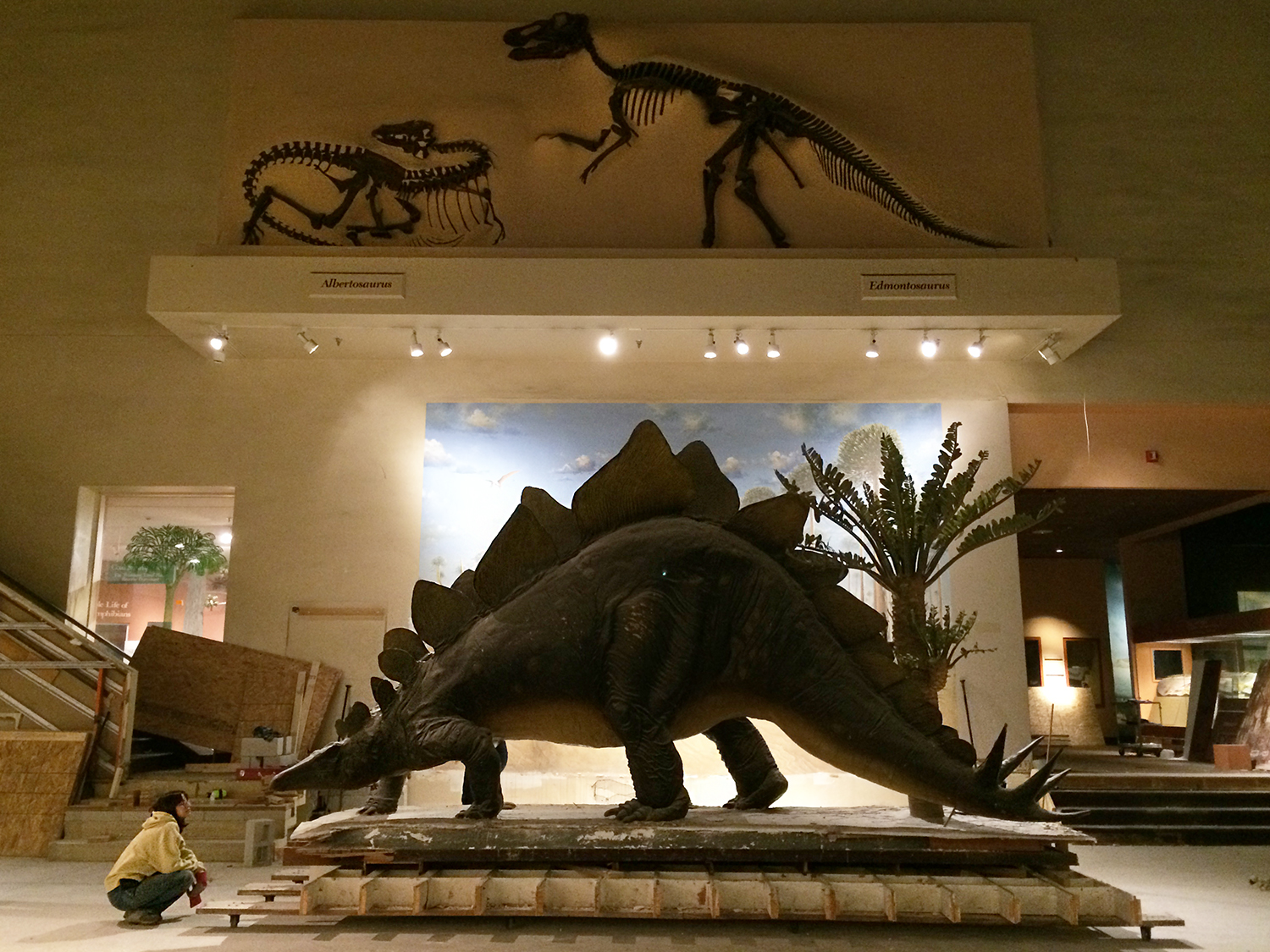
Examining a life restoration of Stegosaurus, originally sculpted in 1904 and recently deinstalled from the NMNH Fossil Halls. It has since been transferred to and is now on exhibit at the Paleontological Research Institution in Ithaca, New York. Photo credit: Abby Telfer.
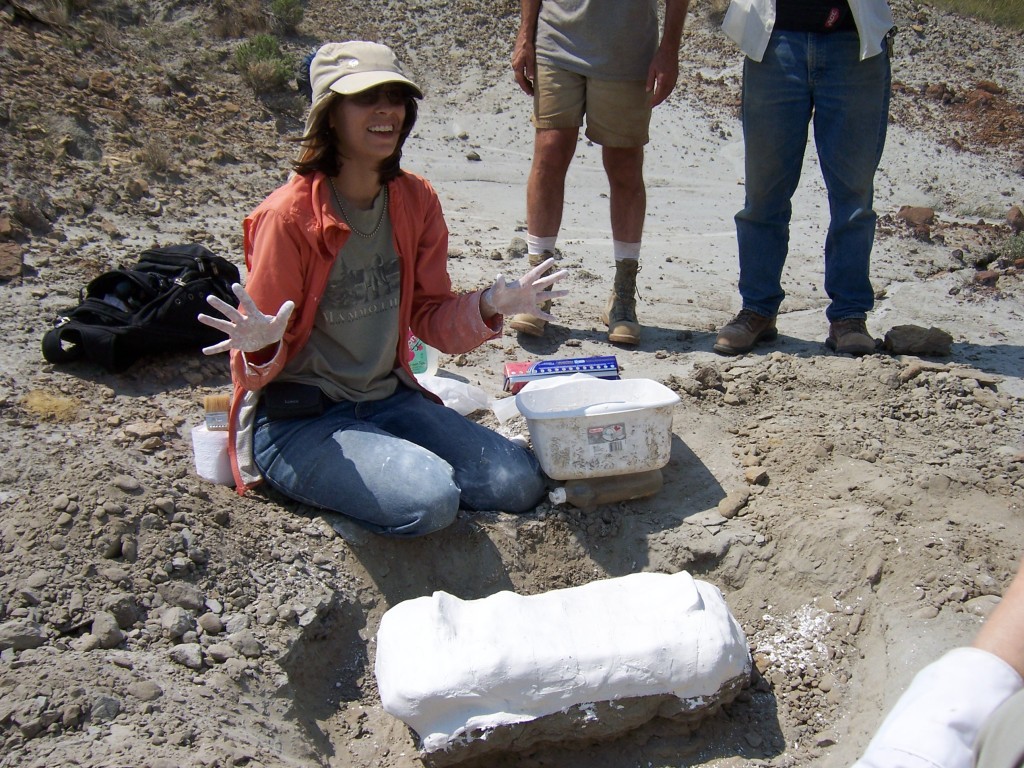
Completing work to field collect a fragment of turtle shell in a protective plaster bandage jacket. This specimen was collected on an expedition to the Hell Creek Formation of North Dakota and Montana in 2014. Photo credit: Abby Telfer.

